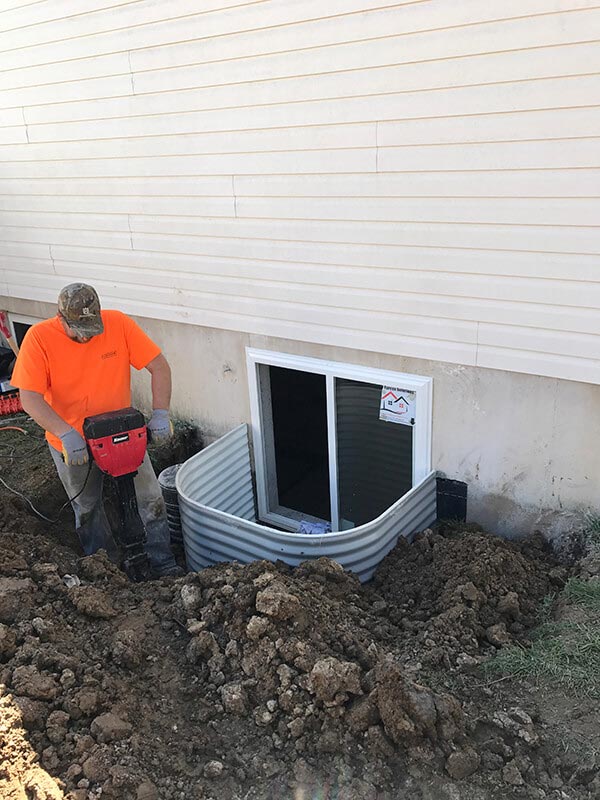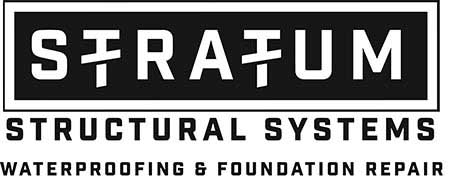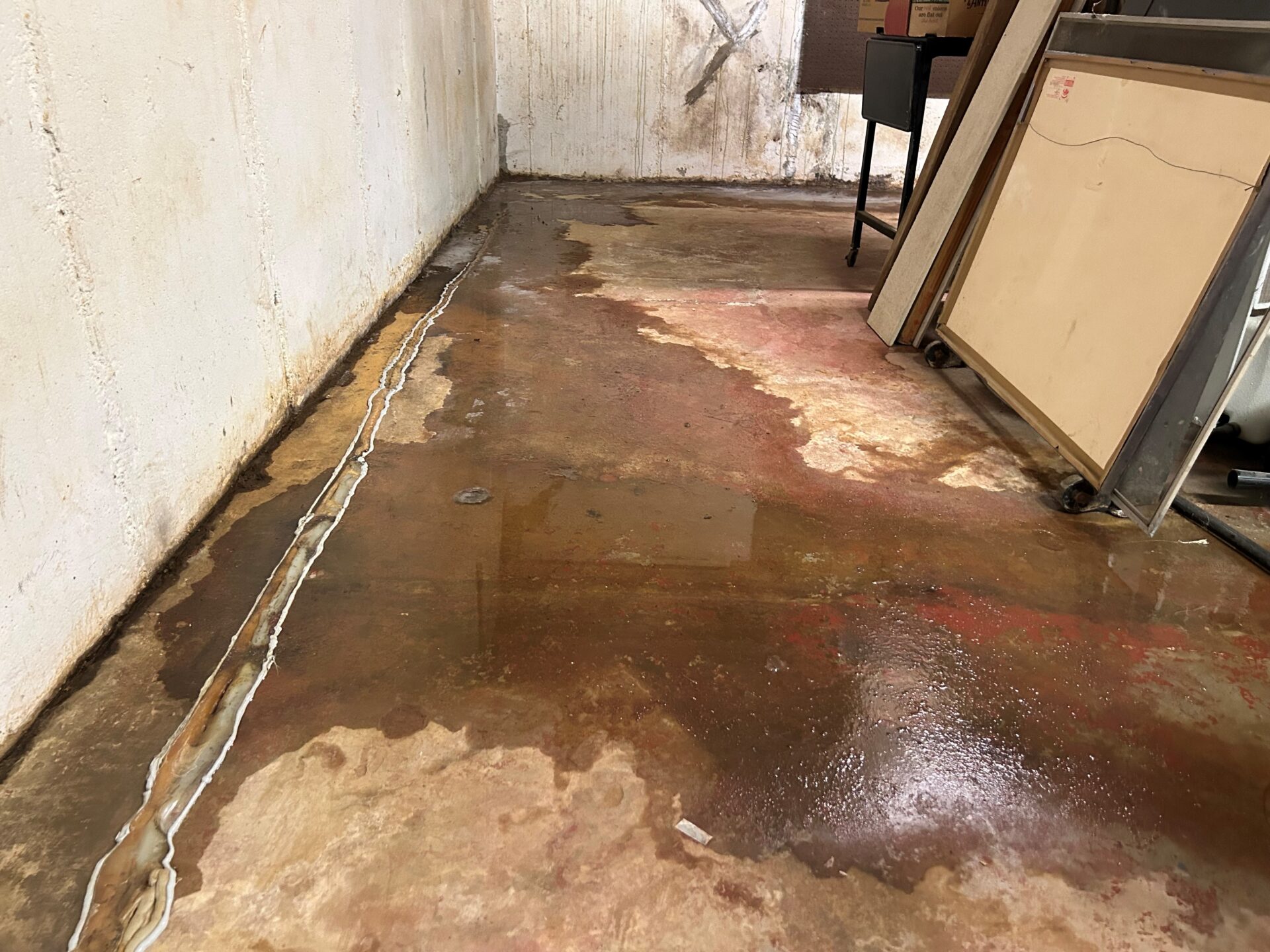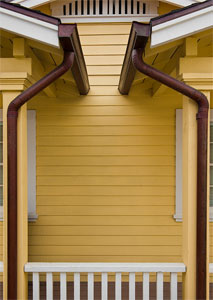Do I Need A Window Well for Egress Windows?

Are you planning to install an egress window in your St. Louis home, or do you already have one but aren’t sure if you need a window well? Many homeowners find themselves puzzled by local building codes and safety requirements, especially when it comes to basement windows. So, does your egress window require a window well? Let’s clear up the confusion and explore when a window well is necessary for an egress window.
When Are Window Wells Required for Egress Windows?
Understanding when window wells are required for egress windows can be confusing. However, knowing whether you need a window well or not is crucial for homeowners to figure out. After all, a window well may be essential for safety or compliance with local St. Louis regulations. Here are some scenarios where you will need a window well for your egress windows.
Below-Grade Windows
Window wells for egress windows ar required when the egress windows are fully below ground level. These are typically found in basements or other subterranean living spaces. The window well provides a crucial escape route in emergencies, allowing occupants to climb out and first responders to enter.
Without a window well, a below-grade egress window would be rendered useless. It would open directly into the soil!
Basement Egress Windows
Basement egress windows almost always require window wells. Even if your basement is only partially below ground, any portion of the window that falls below grade needs a window well.
This ensures that the full opening of the window is accessible and unobstructed, providing a safe exit in case of emergency. Remember, the window well must be large enough to allow the window to open fully and for a person to climb out easily.
Windows Partially Below Ground Level
For windows that are partially below ground level, window wells are required for the portion that is below grade. This situation is common in homes built on slopes or with daylight basements. The window well ensures that the entire window opening is clear of soil and debris, maintaining the full egress capability of the window. Even if only a small part of the window is below grade, a properly sized window well is necessary to meet safety standards and building codes.
When Window Wells Are Not Required for Egress Windows
Understanding when window wells are not necessary for egress windows can help simplify your home improvement decisions. In certain situations, your egress window may meet safety requirements without the need for a well. Let’s explore two specific scenarios where window wells are not required, ensuring you have a clear picture of your options.
Ground-Level Egress Windows
Ground-level egress windows are installed at or just above the exterior ground level, allowing for easy access and exit. Since they do not extend below the surface, there is no need for a window well to provide an escape route or to prevent soil from obstructing the window.
This design not only simplifies installation but also enhances the aesthetic appeal of your home while ensuring compliance with safety regulations.
Above-Grade Windows
Above-grade egress windows are positioned higher than the surrounding ground level, typically in a raised foundation or on an upper floor. Since these windows are already elevated, they do not require a window well to facilitate emergency exits or provide drainage from rainwater.
This design choice can offer a sleek look and additional natural light without the complications of installing a well, making it an excellent option for many homeowners.
Window Well Requirements for St. Louis
When considering the installation of egress windows in St. Louis, it’s essential to be aware of the specific requirements for window wells. These regulations ensure that egress windows provide a safe and effective means of escape in emergencies while also allowing natural light and ventilation into basement spaces. Here are some regulations in St. Louis that you should know before starting your renovations.
Minimum Size Specifications
Window wells must have a minimum horizontal area to ensure that they provide enough space for safe egress. The area inside the well should be at least 9 square feet, allowing for easy access and exit during emergencies. This space is crucial not only for residents but also for emergency personnel who may need to enter the home with equipment.
In addition to the overall area, window wells must meet specific width and projection standards. The distance from the window to the back of the well should be no less than 36 inches. This dimension ensures that individuals can comfortably maneuver through the opening without
The depth of window wells is another critical factor in their design. If a window well is deeper than 44 inches, it must include a ladder permanently attached to facilitate a safe exit. This requirement is vital for ensuring that anyone using the egress window can escape quickly and safely, particularly in emergency situations where time is of the essence.
Drainage Requirements
Effective drainage is essential for maintaining the functionality of window wells. Proper drainage systems prevent water from pooling inside the well, which could lead to flooding or water damage in your basement.
A well-designed drainage solution directs water away from the foundation. When installed properly, drainage systems safeguard your home against moisture-related issues and ensure that the egress window remains accessible at all times!
Code Compliance
Ensuring compliance with local building codes is essential when installing egress windows and their corresponding wells. Adhering to these regulations not only guarantees safety but also protects homeowners from potential legal issues down the line.
St. Louis has specific building codes that outline requirements for egress windows and window wells. Understanding these codes is crucial for homeowners looking to enhance safety while ensuring their renovations meet legal standards. Consulting with local authorities or a professional contractor can help clarify these requirements.
In addition to local regulations, egress windows must comply with International Residential Code (IRC) standards. These guidelines set forth minimum size requirements for egress openings, ensuring they are large enough for safe escape during emergencies. Familiarity with IRC standards can help homeowners navigate their options effectively.
Before beginning any installation project, it’s important to check whether permits are required for egress windows and window wells in your area. Obtaining the necessary permits ensures that your installation complies with local codes and regulations, protecting both your investment and your family’s safety throughout the process.
Window Well Installation for Egress Windows in St. Louis
If you’re considering window well installation for egress windows in St. Louis, it’s crucial to work with experts who understand local building codes and regulations.
At Stratum Structural Systems, our knowledgeable team is equipped to handle all aspects of egress window installation, ensuring that your project meets safety standards and is executed flawlessly. We take precise measurements and provide tailored solutions that fit your specific needs, so you can trust that the job will be done right the first time.
Our experienced professionals are well-versed in the intricacies of egress window requirements, including size specifications, drainage needs, and compliance with both local codes and the International Residential Code (IRC). With Stratum Structural Systems, you can rest assured that your home will not only be safer but also more inviting with the addition of natural light and ventilation. Contact us today to discuss your project and see how we can enhance your basement’s functionality and safety.




